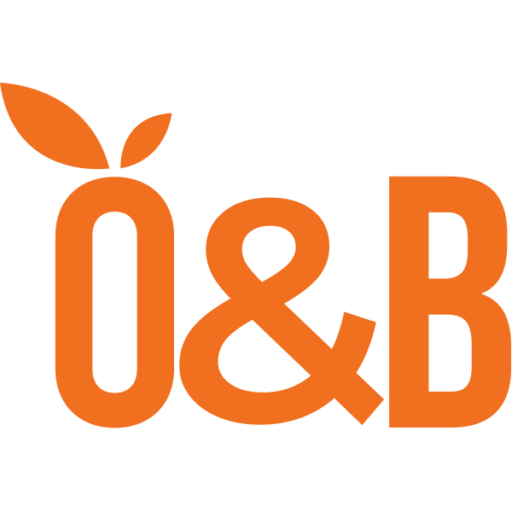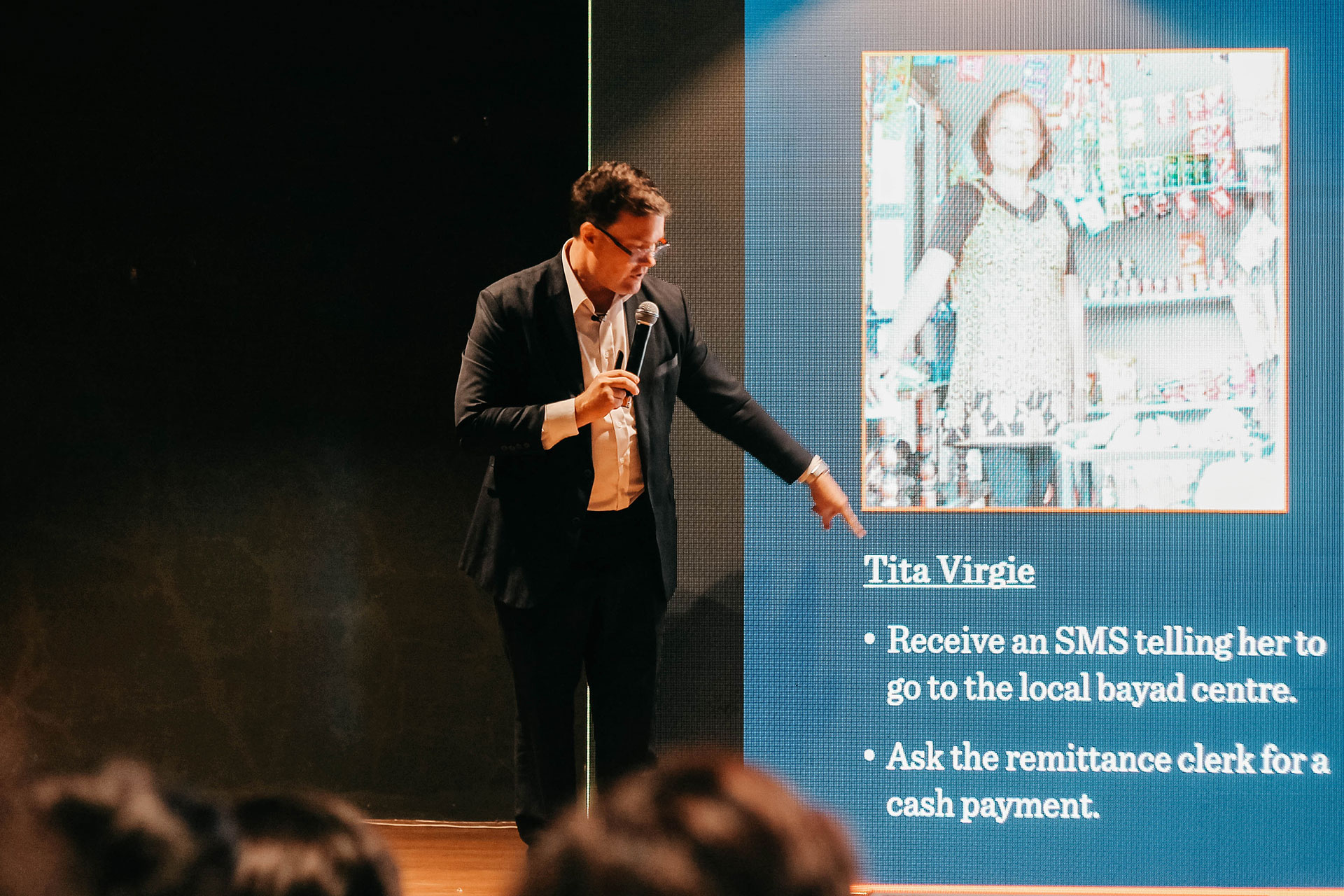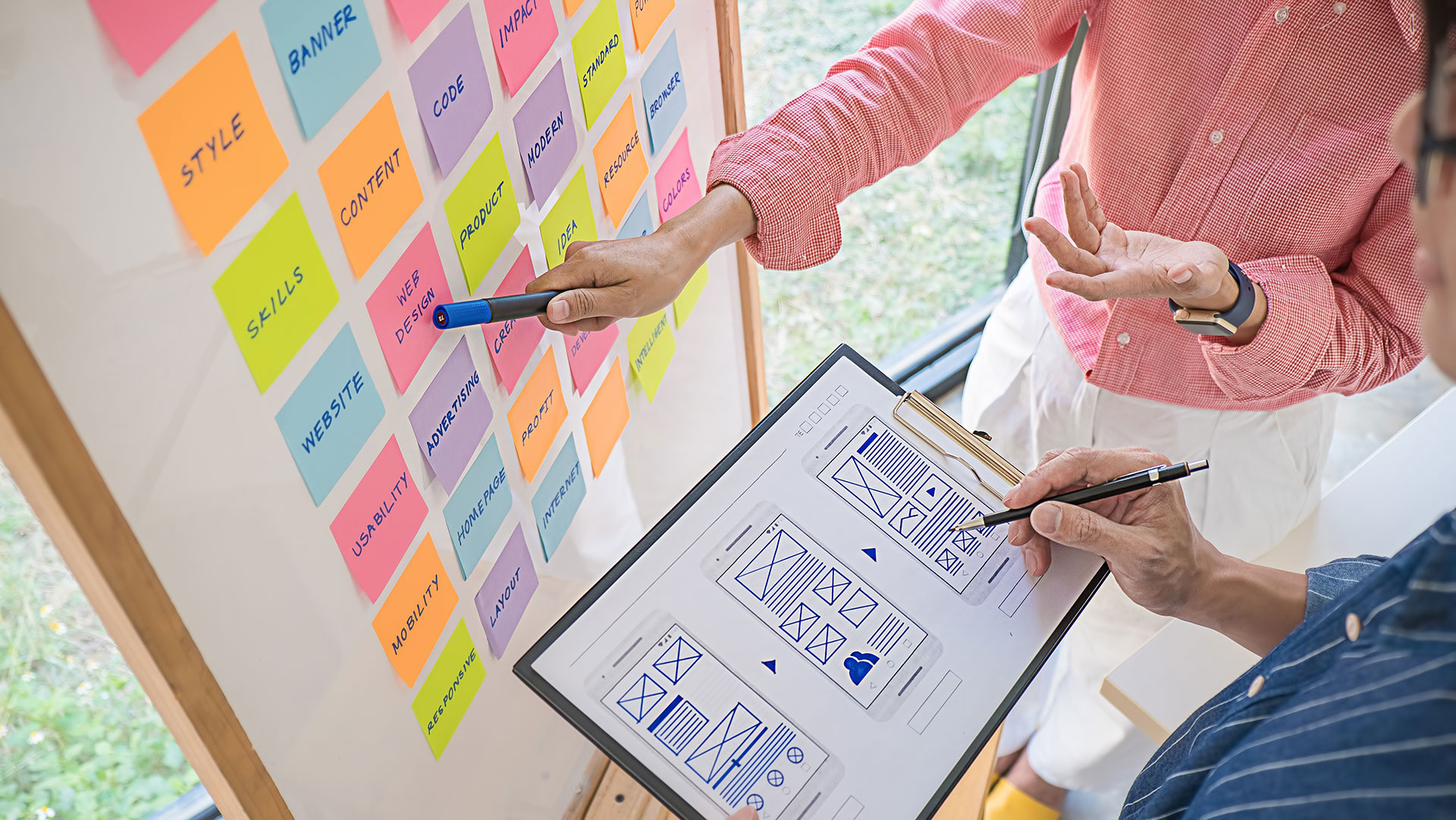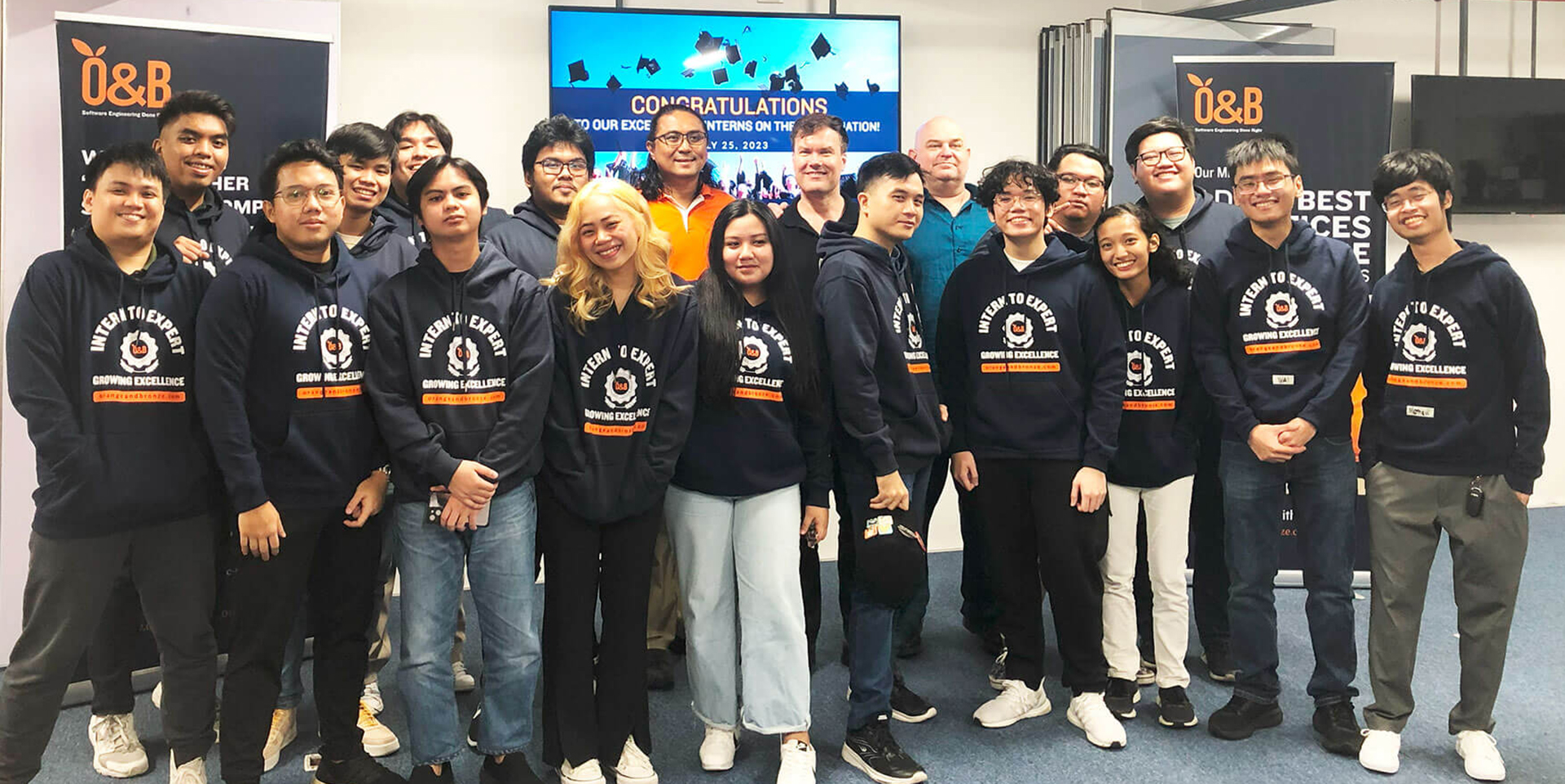Table of contents
- Key Insights
- Introduction
- Embracing the Dual Spectrum of UI and UX
- The Filipino Touch in Technology: EQ as a Unique Advantage
- Refining the User Experience Roles in the Philippines National Skills Framework
- Harmonizing UI with UX through EQ
- The Essence of Empathy in Experience Roles
- UX Roles in Depth
- Conclusion
Key Insights
- We applaud DICT’s leadership in advancing the National Skills Framework initiative, enhancing the Philippines’ competitiveness in technology and design.
- The initiative, supported by O&B and other industry and academe members, has emphasised the distinction between UX and UI, underscoring the unique roles within UX independent of UI design.
- We celebrate this modern approach to defining nuanced UX roles, focused on strategy, research, and user empathy beyond visual design.
- We advocate for incorporating emotional intelligence (EQ) in UX practices to foster more intuitive and meaningful user experiences.
- DICT (and O&B) aims to elevate Filipino UX professionals to the forefront of global design innovation, emphasizing depth in UX understanding.
- We encourage continuous learning and adaptation within the UX community to meet evolving user needs and technological advancements.
Introduction
The Philippines has long stood as a bastion of warmth and understanding, attributes deeply rooted in the nation’s culture and people. This innate emotional intelligence (EQ) of the Filipino people is not just the hallmark of our celebrated hospitality sector, where Filipinos shine on the global stage, but also the bedrock upon which the country’s National Skills Framework (NSF) is expanding, particularly in the realm of User Experience (UX).
The NSF’s evolution, guided by the Department of Information and Communications Technology (DICT) and in close collaboration with industry stalwarts like O&B, reflects a pioneering shift from a predominantly IQ-centric model (borrowed from Singapore), to one that interweaves EQ into the very fabric of UX roles. This strategic realignment differentiates UI from UX, and places the Philippines at the vanguard in ASEAN, in understanding and designing for user journeys across a myriad of interfaces and touchpoints, both digital and beyond.
We recognize Filipino UX professionals for their exceptional capacity for empathy, a quality that transcends technical skill to resonate with users on a human level. It is this very quality that has propelled the country’s NSF to go beyond the limitations of the original framework and to advocate for a more nuanced, empathetic approach to UX—a move that we believe will be instrumental in elevating the country’s global standing in the digital arena.
In this article, we will explore the newly minted UX roles within the NSF, while celebrating the Filipino cultural advantages in EQ. — a journey that begins with the heart and ends with innovation that touches lives across the globe.
Embracing the Dual Spectrum of UI and UX
It is important to distinguish between User Interface (UI) and User Experience (UX) roles. While both UI and UX are essential to creating compelling digital products, their focus areas differ significantly. UI design emphasizes the visual aspects of a product, ensuring that its interface is both aesthetically appealing and intuitively navigable. This involves careful consideration of color schemes, typography, button styles, and other visual elements that contribute to a product’s overall look and feel. While UX considers visual aspects, it is a much broader discipline, and requires a more holistic approach to design that considers all five human senses.
UI Design focuses on the visual aspects of digital products, emphasizing layout, color schemes, typography, button styles, and graphic elements that make interfaces aesthetically pleasing and functionally clear. In contrast, UX delves into the holistic user journey, incorporating research, prototyping, usability testing, and interaction design to ensure products are not only usable but also meaningful and accessible across various user demographics. UX further encompasses all potential human-computer interfaces, rather than being constrained to the purely visual medium: consider the recent acceleration of conversational interfaces, thanks to companies like OpenAI, and other feedback mechanisms such as haptics (like when your phone or gaming console controller emits various vibrations).
Throughout the development of the Philippines National Skills Framework, I strongly advocated for the separation of the proposed single “UI/UX Designer” role into distinct UI and UX roles, and indeed a full career progression within the Experience domain.
This involved expanding the UX side into three specialized roles, including:
- UX Writer (focused on the language, microcopy, and narrative design of the user experience)
- UX Designer (effectively the architects of the UX world)
- UX Usability Tester (focused on validating UX through real world user testing)
This differentiation recognizes the depth and breadth of expertise required in each field and elevates the standard of digital design.
In my opinion, two additional roles should be included in the next update:
- UX Researcher (focused on the development of UX materials such as Mental Models),
- Interaction Designer (focused on Human-Computer Interaction and orchestration of UX across various interfaces).
The Filipino Touch in Technology: EQ as a Unique Advantage
The fabric of Filipino culture is woven with threads of empathy and kindness, traits that have garnered international acclaim in sectors where emotional intelligence is paramount. The Philippines’ National Skills Framework (NSF), in recognizing these traits, champions a unique approach to technology and design, one that prioritizes emotional resonance and user-centricity. By embedding EQ into the core of UX roles, the NSF distinguishes Filipino UX professionals as not just designers but as empathic architects of user experience.
This approach is vividly illustrated in the narratives of Tita Virgie and Kuya Joey (see below insert, “Understanding User Journeys through Personas”), personas that embody the multifaceted nature of Filipino users. Tita Virgie, with her seasoned perspective and Kuya Joey, navigating the world with youthful vigor, both seek to accomplish the same task: applying for a Microfinance loan. Yet, their journeys are starkly different, underscored by their unique needs and interactions with technology. These personas exemplify the nuanced understanding that Filipino UX professionals bring to the table, ensuring that digital products are accessible and resonate with users from all walks of life.
The NSF’s expansion under the guidance of the Department of Information and Communications Technology (DICT) and the collaborative efforts of industry leaders like O&B is more than a policy update; it’s a reflection of the Filipino spirit. It encapsulates the nation’s collective commitment to infuse technology with humanity, making the Philippines a beacon of EQ-driven UX design on the world stage.
Understanding User Journeys through Personas
In the realm of user experience, the concept of personas is instrumental in developing a deep understanding of diverse user needs. Personas, fictional characters created based on user research, embody the characteristics, goals, and behavior of a larger group. In the context of applying for a Microfinance loan, let’s consider two personas: Tita Virgie, a seasoned small business owner, and Kuya Joey, an enterprising young freelancer:
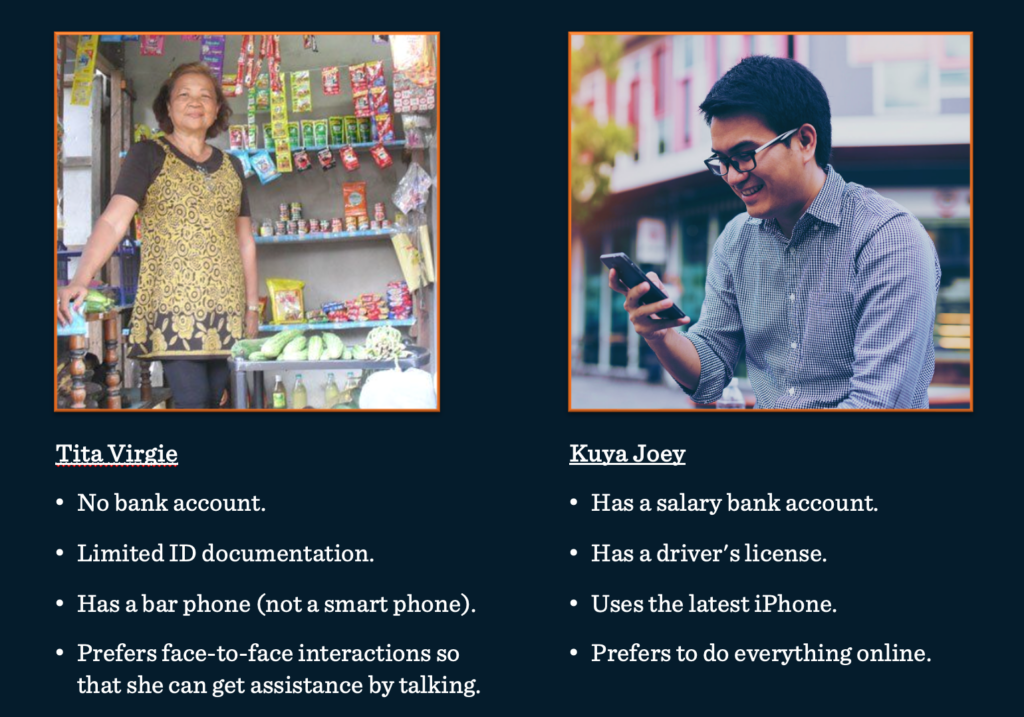
Tita Virgie represents users who are experienced yet traditional; she prefers face-to-face interactions and paper-based processes. Her journey to apply for a loan is steeped in personal interactions, seeking trust and assurance through human contact.
In contrast, Kuya Joey, a digital native, looks for speed and efficiency. His journey is more aligned with online applications and digital verification, valuing the convenience and immediacy that technology offers.
The case study of these two personas applying for the same Microfinance loan illustrates that a one-size-fits-all approach to product development is inadequate. It highlights the need for UX professionals to delve into persona-led user journeys to ensure that products cater to the specific context, behaviors, and preferences of their users. This personalized approach to design is what sets apart empathetic, user-centric solutions that truly resonate with the end user.
An effective solution (including both software and other touchpoints) in support of the Microfinance loan application process needs to take both personas into account in the Philippines.
(for further discussion of personas and product planning, please refer to the slides from my recent talk, Agile Product Planning 101, which connects persona-lead user journeys with User Story Mapping)
Refining the User Experience Roles in the Philippines National Skills Framework
The Original “UI/UX” Conundrum
As discussed, the Philippine National Skills Framework initially reflected a common oversight found in many skills frameworks worldwide: the amalgamation of UI and UX roles into a single “UI/UX Designer” designation. This oversimplification failed to acknowledge the depth and breadth of expertise required in each field.
For a deeper understanding of UX and “experience,” consider how these concepts go beyond mere aesthetics to fundamentally shape how users interact with and perceive a product. UX, or User Experience, is an all-encompassing term that includes everything affecting a user’s interaction with a digital service or product, from usability to emotion. It’s about deeply understanding user needs and creating solutions that don’t just work technically but also resonate emotionally. “Experience” in this context refers to the journey a user takes, encompassing every touchpoint (digital and physical) that they have with the product, ensuring it is intuitive, seamless, and meaningful. This focus on empathy and user-centric design is what differentiates UX from more visually focused disciplines, emphasizing the importance of considering the user in every aspect of product design and development.
DICT and O&B’s Contribution to Role Differentiation
The initial conflation of UI and UX disciplines in the skills framework was indicative of a broader industry challenge: the need to distinguish between the creation of visually compelling designs and the development of user-centric experiences. While both roles aim to enhance user satisfaction, their approaches and outcomes are distinct. UI Designers craft the touchpoints that invite interaction, whereas UX Designers map out the journey those interactions create, ensuring it aligns with users’ needs, expectations, and contexts.
Recognizing the critical need for role differentiation, the Department of Information and Communications Technology (DICT), in collaboration with industry pioneers like O&B, spearheaded an initiative to dissect the “UI/UX” moniker within the National Skills Framework. This collaborative effort was driven by a shared vision to elevate the Philippine digital product design landscape to global standards while leveraging the innate empathetic understanding and emotional intelligence of the Filipino workforce.
This initiative led to the expansion and refinement of the Experience roles, clearly delineating the specific skill sets and responsibilities associated with UI Design, UX Research, UX Design, Interaction Design, UX Writing, and Usability Testing, although in the current version of the NSF, Interaction Design and UX Research have been subsumed into the UX Design, Writing and Usability Testing roles.
By advocating for this separation, O&B played a pivotal role in ensuring that the framework not only captured the full spectrum of design and experience roles but also highlighted the importance of empathy, a key attribute in UX-related disciplines. This move underscored the Philippines’ commitment to fostering a workforce that is not only technically skilled but also uniquely equipped with the emotional intelligence necessary for crafting user-centered digital experiences.
Harmonizing UI with UX through EQ
The interplay between UI and UX is further enriched by the application of emotional intelligence (EQ). For UI designers, EQ informs the creation of designs that resonate on an emotional level, making digital interactions more engaging and satisfying. Meanwhile, UX designers employ EQ to delve deeper into the user’s journey, ensuring that every aspect of the interaction is empathetic to the user’s needs and context. This nuanced understanding of both roles underscores the importance of integrating EQ across all dimensions of design to create experiences that truly connect with users.
The Essence of Empathy in Experience Roles
Emotional intelligence (EQ) is the cornerstone of User Experience skills. In this section, I articulate the unique EQ attributes that Filipinos bring to user experience roles, drawing parallels to their exceptional service in hospitality industries worldwide.
The Philippines’ rich tradition of warmth and kindness is reflected in the nuanced understanding of user needs that Filipino user experience professionals exhibit. They leverage this innate ability to empathize with users, which is pivotal in crafting user-centric designs. This is especially true when considering the diversity of users, where a profound sense of empathy ensures that designs are inclusive, accessible, and resonant with the user’s emotional journey.
In the context of the National Skills Framework, this empathy translates into a set of roles that go beyond mere technical proficiency. UX Designers and Usability Testers, with their ability to genuinely understand and advocate for the user, set the stage for more engaging and effective design strategies, ensuring that the products not only work well but feel right to the user. UX writers articulate the brand’s voice in a way that speaks directly to the user’s needs and wants.
Emphasizing empathy in UX roles aligns with the Department of Information and Communications Technology’s (DICT) vision for the National Skills Framework. It reinforces the collaboration between industry experts and government initiatives to foster a user experience landscape that is not only technically advanced but also profoundly human-centric. This approach not only enhances the quality of digital products but also showcases the Philippines’ commitment to putting people first in technology and innovation.
UX Roles in Depth
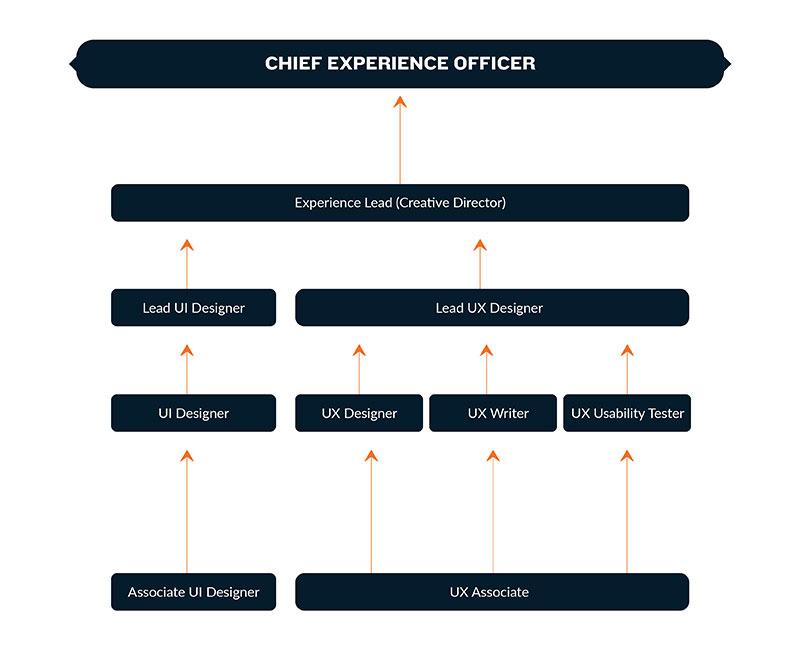
User Experience Leadership
- User Experience leaders synergize UX creativity and agile methodology, driving product development that’s responsive to user feedback.
- They emphasize clear communication, connecting user experience outcomes with software engineering processes to ensure unified product vision.
- Agile product planning under their guidance integrates usability testing into the development cycle for continuous improvement and user satisfaction.
Leadership in User Experience connects creativity, strategy, and practical execution within product teams. These leaders harness the strengths of UX professionals, guiding cross-functional teams through a seamless integration of design thinking and agile development. They must actively facilitate a collaborative environment where the expertise of UX researchers, designers, and usability testers aligns with the technical prowess of engineers.
In agile product development, experience leaders ensure that user stories and personas inform the development process. They champion the creation of products that are deeply rooted in user needs, fostering an iterative process where user feedback is continuously woven into development cycles. This approach ensures that products are not only built to specification but also honed to meet the evolving expectations of users.
At the helm of experience leadership, there is a clear emphasis on communication. Leaders articulate the importance of each UX output, ensuring it dovetails with engineering efforts. The agile feedback loop is enriched by usability testing, bringing to light user interactions that inform quality assurance and guide feature improvements.
These leaders uphold the principle that good design and engineering are not siloed disciplines but are interdependent aspects of product development. They are adept at steering their teams through the complexity of modern software projects, where success hinges on the harmonious blend of technical feasibility and user-centric design. They are the architects of a development ethos where every sprint and iteration brings a product closer to the ideal user experience.
UX Writers Craft the Narrative
- Creates clear and compelling content for user interfaces
- Aligns brand voice with user expectations and needs
- Ensures consistency in language and tone across all touchpoints
UX Writers shape the voice of digital products, creating the textual content that guides, informs, and delights users. They craft the words that make up the interface, from button labels to error messages, ensuring that every message is clear, helpful, and reflective of the brand’s personality.
Their role is to ensure that the dialogue between the product and the user is not only clear but also engaging and relevant. The content they create plays a critical role in the usability of the product, directly influencing user satisfaction and comprehension.
With a focus on language, they make sure that every word serves a purpose, facilitating the user’s journey and enhancing the overall narrative of the product.
UX Designers Architect the Experience
- Constructs comprehensive UX designs that cater to user needs
- Ensures design consistency across various platforms and devices
- Facilitates a holistic view of the user experience within product teams
UX Designers are responsible for the overall vision of the user experience. They craft the structural blueprints that inform the design of a cohesive and user-friendly product ecosystem, considering every touchpoint a user may encounter.
Their work involves a careful consideration of how each element of the product interacts with others, ensuring a unified and strategic approach to user experience design. They operate at the intersection of user needs, business goals, and technological capabilities, creating designs that are both visionary and grounded.
The UX Designer’s role is critical in ensuring that the final product provides a seamless and holistic user experience that meets user expectations and drives engagement.
Usability Testers Validate the Product’s Usefulness
- Conducts tests to ensure products meet user requirements
- Provides feedback for continuous improvement
- Bridges the gap between user expectations and product functionality
Usability Testers are the gatekeepers of quality, rigorously testing products to ensure they meet the high standards expected by users. Their role is fundamental to the iterative design process, as their testing process identifies points of friction in the user experience of a product, providing actionable insights for continuous product development and improvement.
They conduct a variety of tests, from A/B testing to user interviews, to validate that each aspect of the product is not only functional but also intuitive and satisfying to use. By embracing usability testing as an integral part of the product development cycle, they champion a user-first philosophy, ensuring that products are not just built, but refined and perfected with the user in mind.
Conclusion
DICT’s inclusion of nuanced UX roles in the new National Skills Framework illustrates the nation’s commitment to integrating empathy with digital innovation, recognizing the intrinsic ability of Filipinos to empathize and engage through technology. It’s a showcase of how blending user needs with agile practices leads to products that are both useful and delightful to end users.
At O&B, we reaffirm the collaborative spirit that brought about this evolution in the NSF. We proudly celebrate the symbiotic partnership between the Department of Information and Communications Technology (DICT), the academic sector, and industry vanguards like O&B, in fostering a future Filipino workforce adept in the nuances of user experience.
This partnership has been instrumental in incorporating a rich tapestry of UX roles into the national framework, ensuring that the Filipino workforce is well equipped for the rapidly evolving global digital landscape.
The NSF models adaptability and innovation, rooted in cultural strengths that can translate into competitive advantages. With a uniquely Filipino approach to UX, characterized by empathy and connectivity, it has the potential to become integral to the digital experiences crafted within and beyond the nation’s borders. Optimistically, we anticipate that this subtle, yet profound touch has the potential to set the Filipino digital product landscape apart on the world stage.
A Unified Vision for the Future
As we chart a new course for the Philippines National Skills Framework, it’s imperative to recognize the distinct yet complementary roles of UI and UX. By delineating these roles within the NSF, we not only elevate the standard of digital design but also emphasize the critical role of emotional intelligence in creating products that are not only functional but deeply human-centric. This distinction marks a significant step forward in our national mission to foster a more nuanced and emotionally intelligent approach to digital product design.
